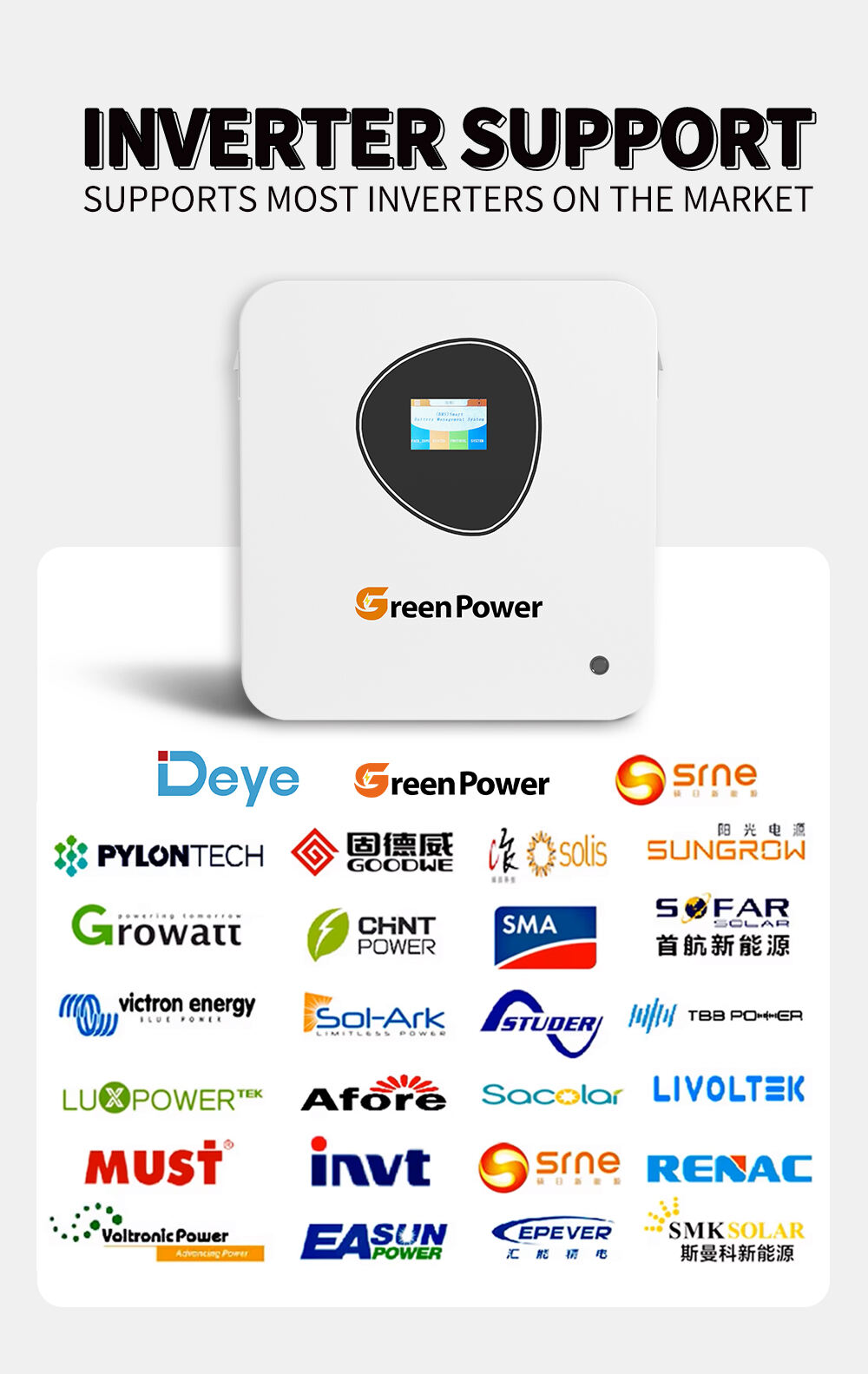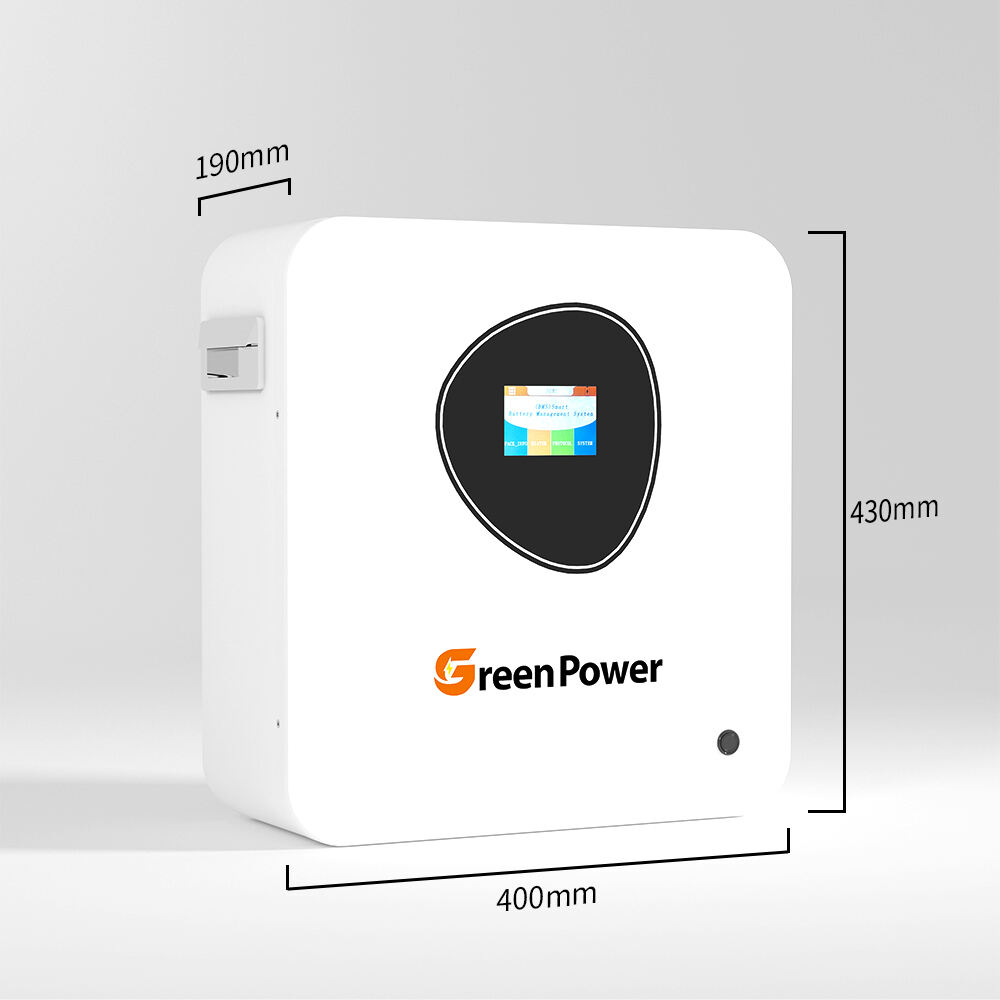ፕሪሚየም ኢንቬርተር ባትሪ ቴክኖሎጂ ዋና አካላት እንዴት እንደሚረዳ መረዳት
የዘመናው የኃይል አቋርጦች በአለም አቀፍ ሁኔታ የተለመደ መሆኑን ከግምት ውስጥ በማስገባት፣ ኢንቬርተር ባትሪዎች የማይቋረጥ የኃይል አቅርቦት ለማረጋገጥ ዋና አካላት ሆና ተነስተዋል። የከፍተኛ አፈፃፀም bateeriya inverter የማይንቀሳቀስ የኃይል ምንጭ ሲያቋርጥ ቋሚ የኃይል አቅርቦት የሚሰጥ bateeriya inverter ቴክኖሎጂ በከፍተኛ ሁኔታ አድሷል፣ የበለጠ ቅልጥ እና ጠንካራ ሆኖ ለመቆም የሚረዱ የተሻለ ባህሪያትን የያዘ።
ደረጃው እና ከፍተኛ ችሎታ ያለው ኢንቬርተር ባትሪ አሂዶች መካከል ያለው ልዩነት በቴክኒካዊ ማብራሪያቸው፣ በሥራው ጥራት እና በባህላዊ መለያዎቹ ላይ ይመስረታል። የተደራጁ ኃይል መፍትሄን ስትገዝ ለመወሰን እነዚህ አካላት እውቀት አለመላቸው አስፈላጊ ነው። የሚከተሉትን የሚያሳዩ የባህላዊ ባትሪዎች መለያዎች እንጠቀስ።

ዋና ዋና የመፈፋሪያ መለያዎች
የእናጎ ባትሪ አስተካክል እና አሰራር
የከፍተኛ ችሎታ ያለው ኢንቬርተር ባትሪ ሁሉንም መሠረት የሚሆነው የእሱ ካሜርስ አቀራረብ እና አሰራር ላይ ይመስረታል። የउጥ ጥራት ያለው ሞዴሎች በደፈናው የሊድ-አሲድ ቴክኖሎጂዎች ወይም የሊቲየም-አዮን ዘዴዎች ይጠቀማሉ ማለት ከፍተኛ የኃይል መጠን እና የመዞሪያ ሕይወት ይሰጣሉ። የውስጥ አካላቱ በትክክል የተሠራ፣ በከፍተኛ ጥራት ያለው ቁሶች የተሠሩ እና በተለያዩ ሥራዎች ሁኔታዎች ውስጥ በማቋቋም ላይ የተረጋጉ ናቸው።
የአዲስ ኢንቬርተር ባትሪ ዲዛይኖች የሚያረጋግጡ እና የኃይል መቅረጽን የሚያሻሽሉ የታሸቀ ፕላቶችን እና የተለየ ጉድ ቅርፁን ይጠቀማሉ። ፕላቶች መካከል የሚገኙ የመከፋፈያ ስርዓቶች የሚክሮፋይበር ቁሳቁሶችን ይጠቀማሉ ይህም የውስጥ ኮርቲን የሚቀጥሉ ሲሆን የኤሌክትሮላይት መስፋፋትን ይሻሽላሉ። እነዚህ የግንባታ አካላት የረጅም ግብይት ሕይወትን እና በኃይል መጥፋፋት ጊዜ ላይ በተረጋጋ መልኩ የሚሰራ አፈጻጸምን ያረጋግጣሉ።
የችሎታ እና የኃይል መውጫ መለያዎች
የከፍተኛ ኢንቬርተር ባትሪ ስርዓቶች የተለዩ ገበያዎች እና ቀጣይነት የላቸው የኃይል መውጫ መለያዎች ናቸው። የፕሪሚየም ክፍሎች የከፍተኛ አምፕየር-ሰዓት (Ah) መለያዎችን ይሰጣሉ፣ በጠቅላላው ለቤት ጥቅሞች ከ150Ah እስከ 200Ah የሚደርሱት። ይህ የችሎታ መጨመር የረጅም ጊዜ የኃይል መተላለፍ ጊዜን እና የተሻለ ጭነት መቆጣጠር ችሎታን ያስከትላል።
በመሙላት ዙር ጊዜ የኃይል ውጤት ቋሚ ይቆያል፣ በከባድ ጭነቶች ምክንያት እ даже የቮልቴጅ ጥብቅነት ይጠብቃል። ይህ ቋሚ ችግር የሚፈጥረው የኤሌክትሮኒክስ መሳሪያዎች የማይቋረጥ እና የተወሳሰበ ኃይል እንዲቀበሉ እና የኃይል መስፋፋት ምክንያት ሊከሰት የሚችለውን ጉዳት ወይም የአሠራር ችግሮች እንዳይፈጠሩ ያስችለዋል።
ብልጥ ቴክኖሎጂን ማዋሃድ
የባትሪ መሙላት ጉዳይ አስተዳደር
የባትሪ ስርዓቶች የከፍተኛ ችግር በመሙላት ሂደቱ የተሻለ አልጎሪዝም ይጠቀማሉ ይህም የመሙላት ሂደቱን ይሻሻላል። ይህ የባትሪ ዙሪያ የሚሰሩ ስርዓቶች የባትሪ የሙቀት መጠን፣ የመሙላት ሁኔታ እና የመጠቀም አይነቶችን መሰረት አካላት ይቀይራሉ። ይህ የመሙላት ሂደት በተሻለ አይነት የባትሪ ሕይወት ይጨርስና የኃይል ተጠቅሞ ይቀንሳል።
የተሻሉ ምህጻራት የተለያዩ ደረጃዎችን የያዘ የመሙላት ጥቅማጥቅሞችን ይጨምራሉ ይህም የመጀመሪያ መሙላት፣ የመያዣ እና የማይንቀሳቀስ ደረጃዎችን ያካትታል። ይህ የባትሪ መሙላት ዘዴ የመሙላት ብዙነትን የሚቀንስ ሲሆን በውስጡ የሚገኙ አካላት ላይ ጉዳት እንዳይፈጠር ያስችለዋል።
የርቀት ክትትል እና ምርመራ
የአሁኑ የባትሪ አሃድ ክፍሎች የተሻለ የመከታተያ ችሎታዎች ጋር ይመጣሉ። በስማርት ፋን አፕሊኬሽኖች ወይም ወብ በይነ ገጽ በኩል ተጠቃሚዎች በእውነተኛ ጊዜ ውስጥ የባትሪ ጥናት፣ የሞላ ሁኔታ፣ እና የሥራ መለኪያዎችን ማግኘት ይችላሉ። ይህ የገጽታ ችሎታ የቅድመ-ተቋቋም ጥ maintenanceል እና የተሳሳተ ችግሮችን በመጀመሪያ ማወቅን ያስችለዋል።
የባትሪውን የሥራ መለኪያዎች የቀጣይነት ያለው የባዮሜትሪክ ስርዓቶች ያንализируют ሲሆን የጥ maintenanceል ጥናቶች ወይም የሥራ ስህተቶች ሲከሰት ምንጭ ይሰጣሉ። ይህ የመከታተያ ደረጃ የተሻለ የሥራ ችሎታ እና የመጨረሻ ጊዜ ህይወታዊ ሁኔታዎች ውስጥ የተሳሳተ ስረቆችን መከላከል ያስችለዋል።
ደህንነት እና የአካባቢ ጥናት
የተሻለ የደህንነት መካኒዜሞች
የተሻለ የባትሪ አቅርቦት አቀራረቦች የተለያዩ የደህንነት ቅርጾችን ይጨምራሉ። እነዚህ የሙቀት ማለፊያዎች፣ የግፊት መለካ ቫልቭዎች፣ እና የመቆራረጥ የባትሪ ማቆሚያ ስርዓቶችን ያካተቱ። የባትሪ አስተዳደር ስርዓቱ (BMS) የሥራ ሁኔታዎችን በቀጥታ ይከታተላል እና የደህንነት ሁኔታዎች ሲታወቁ ተራ በራሱ አሃዱን ማቆም ይችላል።
የሙቀት አስተዳድር ስርዓቶች በመሙላት ጊዜ እና በከባድ ጥቅም ውስጥ የበለጠ ሙቀት እንዳያስከትሉ ያስችላቸዋል፣ የተለየ የአየር አቅርቦት አቅራቢያዎች በመሪ አሲድ ዓይነቶች ውስጥ የጋዝ መስፋፋት በተሻለ መንገድ ለማድረግ ይረዱዋል። እነዚህ የደህንነት ተግባራት የባትሪውን እና የተገናኙትን መሳሪያዎችን ይ захивают፣ እና የክዋኔ ሕይወቱን ይዘርጋሉ።
የአካባቢ ተፅዕኖና ዘላቂነት
የከፍተኛ ጥራት ያለው ኢንቨርተር ባትሪ የሚያመርቱ ኩባንያዎች በቀለም ላይ የሚኖራቸውን ተጠያቂነት በመንገዶቻቸው ውስጥ ይጨምራሉ። የአዲስ ግeneration የሆኑ ክፍሎች የተደጋገሙ የመልሶ ጥቅም ሊኖራቸው የሚችሉ አካላት ይይዛሉ እና የአነስተኛ ቅርፅ ተፅእኖ የሚኖረባቸውን የማምረት ሂደቶች ይጠቀማሉ። የተወሰኑ የተሻሉ ምርቶች የሚያነቃቅሩ የሚገናኙ የተለያዩ አካላትን ይጨምራሉ እና በመጨረሻው ጊዜ የመልሶ ጥቅም ማድረጉን ይሻፋሉ።
የኢነርጂ ቅልጥነት ደረጃዎች የመረጃ መሳሪያ ዋና ዋና ባህሪዎች መሆናቸውን አድርገዋል፣ የላዕለኛ ምርቶች ደግሞ የበለጠ አስተላላፊነት የሚያሳዩ የመቀየሪያ ደረጃዎች አሉላቸው ምክንያቱም የኃይል ጥቅም እና የክዋና ወጪዎችን ይቀንሳሉ። ይህ የተመች የድurableነት ላይ ያለው ጥረት የዓለም አቀፍ የአካባቢ ጥናቶችን ጋር ይዛመዳል እና በረጅም ጊዜ ውስጥ ተጠቂዎችን የወጪ ጥቅሞች ይሰጣቸዋል።
የመቆ maintenance እና የህይወት ርዝመት ባህሪዎች
ለረጅም አገልግሎት ጊዜ የተነደፉ የዲዛይን አካላት
የመቃቂ ኢንቨርተር ባትሪ ስርዓቶች የመቆሚያ እና የማንኛውም ጥንቃቄ ያነሰ የመጠን አስተላላፊነት እንዲኖራቸው የተገነቡ ናቸው። የተሻሉ የመርህ ዲዛይኖች የኦክሳይድ ምጥጥ እና የፕላኩ አድሷን ይቃወማሉ፣ ከዚያ የተለየ የኤሌክโทรላይት ቅይጥ የውሃ ክብደት እንዲቀንስ ይረዳለን። የተሰናደቁ የማያስፈልጉ የጥንቃቄ አማራጮች የተቀባ የግራስ ማት (ኤ.ጂ.ኤም) ወይም ጂል ቴክኖሎጂዎችን ይጠቀማሉ ይህም የኤሌክትሮላይት ማረጋገጫዎችን የማያስፈልጉ ያደርጋል።
የሥራ ጥራት የውጭ አካላትን ድጋፍ ያደርጋል፣ በጭንቅላቱ እና በአካባቢ ምክንያቶች የተነሳ የማይቃወም ግንባታ ያለው ጣቢያዎች ያካትታሉ። የተርሚናል ዲዛይኖች የተጠናቀቀ ግንኙነቶችን ይፋቅዳሉ እና የኦክሳይድ ምጥጥን ይከላከላሉ፣ ባትሪው የሚቆይበት ጊዜ የኃይል ማስተላለፍን የተረliable ያደርጋል።
የዋስትና እና የሚደገፍ ባህሪያት
ከፍተኛ አፈፃፀም ያላቸው የኢንቨርተር ባትሪ አምራቾች በምርቶቻቸው ላይ ሙሉ ዋስትና በመክፈት እምነት እንዳላቸው ያሳያሉ። ፕሪሚየም ሞዴሎች በተለምዶ የኢንዱስትሪ ደረጃዎችን የሚበልጡ የተራዘሙ የዋስትና ጊዜዎችን ይዘው ይመጣሉ ፣ ብዙውን ጊዜ ለተወሰኑ የአፈፃፀም መለኪያዎች ሽፋን ያካትታሉ። ይህ የዋስትና ጥበቃ በመጫን፣ በጥገናና በመጥፎ ሁኔታዎች መፍትሔ በማቅረብ ረገድ የሚረዱ ሙያዊ ድጋፍ አገልግሎቶች የተሟላ ነው።
በተደጋጋሚ የሚነሱ ጥያቄዎች
የከፍተኛ ችሎታ ያለው የኢንቬርተር ባትሪ በአማካይ ስንት ዓመት ይቆያል?
የከፍተኛ ችሎታ ያለው የኢንቬርተር ባትሪዎች በተሻለ መንገድ ተቆጣጣሪነት ሲኖራቸው በአማካይ 5-10 ዓመት ይቆያሉ። የትክክለኛው የመቆያ ጊዜ ጥቅም ላይ የዋለበት አይነት፣ የአካባቢ ሁኔታዎች እና የጠብቃ ስርዓቶች መከታተል ላይ የተመሰረተ ነው። የላቀ ሁኔታ ሞዴሎች ግን ይህን መጠን ከፍ ለማድረግ ይችላሉ።
የባትሪዎች ላይ የሚባለው የባህሪ ክፍያ ቴክኖሎጂ ለምን አስፈላጊ ነው?
ባትሪ ሁኔታዎችንና ጥቅማቸውን ማስተካከል በመቼ ፍጠራ የሚያሻሽል የመሙያ ቴክኖሎጂ የመሙያ ሂደቱን ያሻሽላል፡፡ ይህ የባትሪ ህይወትን ያረጋጋል፣ የመሙያ ቅልጥፍናን ያሻሽላል እና የኤሌክትሪክ ተጠቃሚነትን ያቀንሳል፡፡ እንዲሁም በመሙያ እጥፍ ላይ የመሙያ እጥፍ እና የፕላኩ ሰልፌት መከላከልን ያስistanceል፡፡
የከፍተኛ ቅልጥፍና ኢንቬርተር ባትሪዎች የበለጠ ክፍያ ዋጋ ዋጋ ይሰጣሉ?
ከፍተኛ ችሎታ ያለው ኢንቬርተር ባትሪዎች በመጀመሪያ የበለጠ እና ትልቅ ገንዘብ የሚፈጀውን እንጂ በረጅም ጊዜ ውስጥ በአብዛኛው የበለጠ ትርፍ ያስገኛሉ። የረጅም ዕድሜ፣ የተሻለ ችሎታ እና የተቀነሰ የመቆ maintenance ዕድል በአብዛኛው የተለያዩ አጠቃቀም ወጪዎችን ይቀንሳል። በተጨማሪም፣ የተሻለ ገዢ እና የችሎታ ገዢዎች በኤሌክትሪክ አቃው ወቅት በተከታታይ አሂድ በዋጋ ይሰጣሉ።

